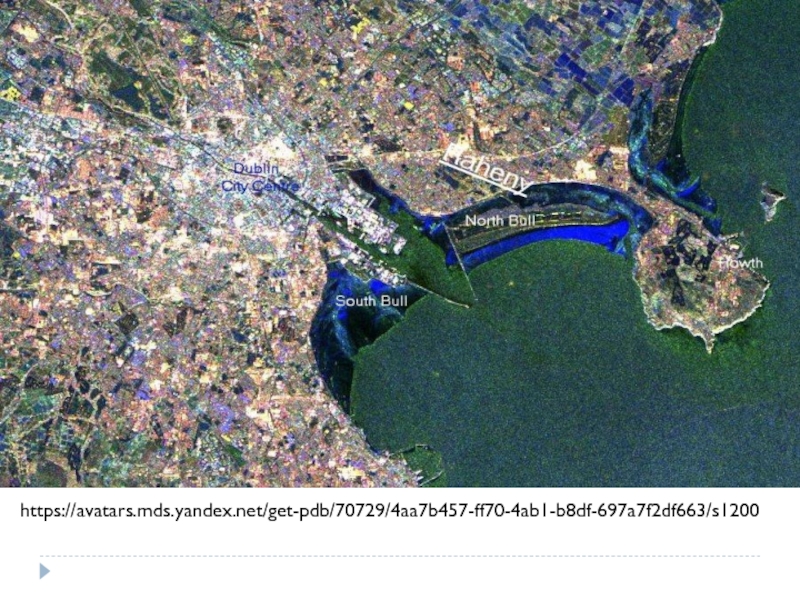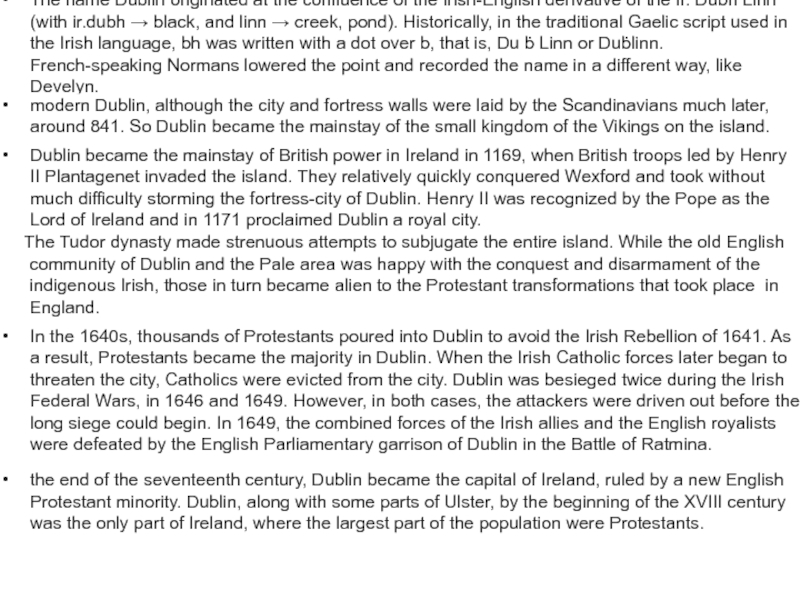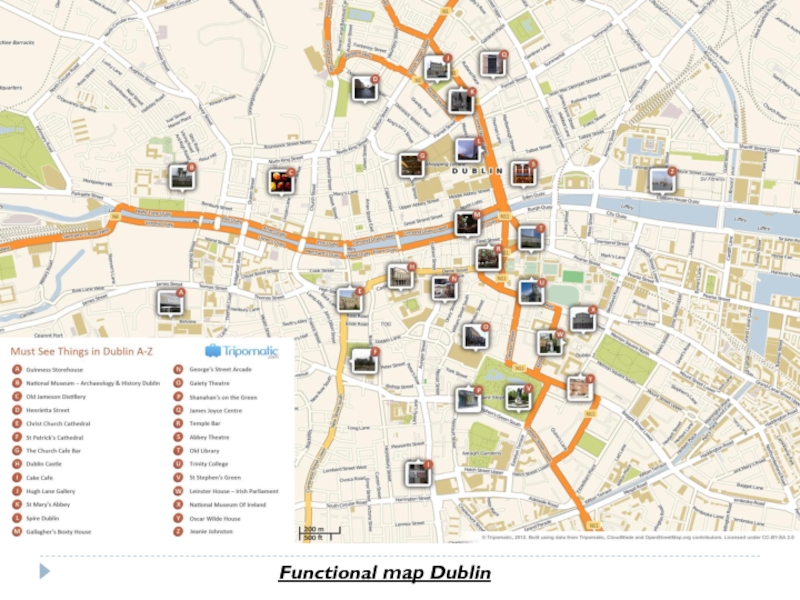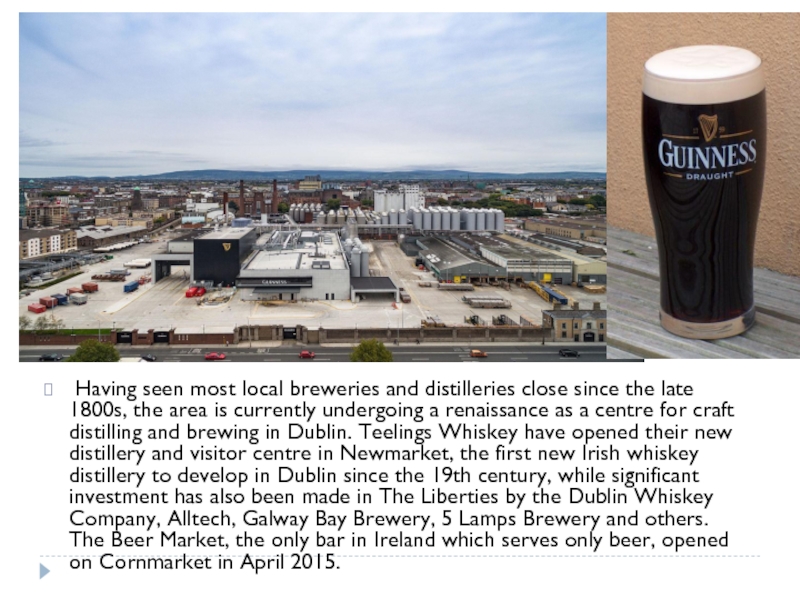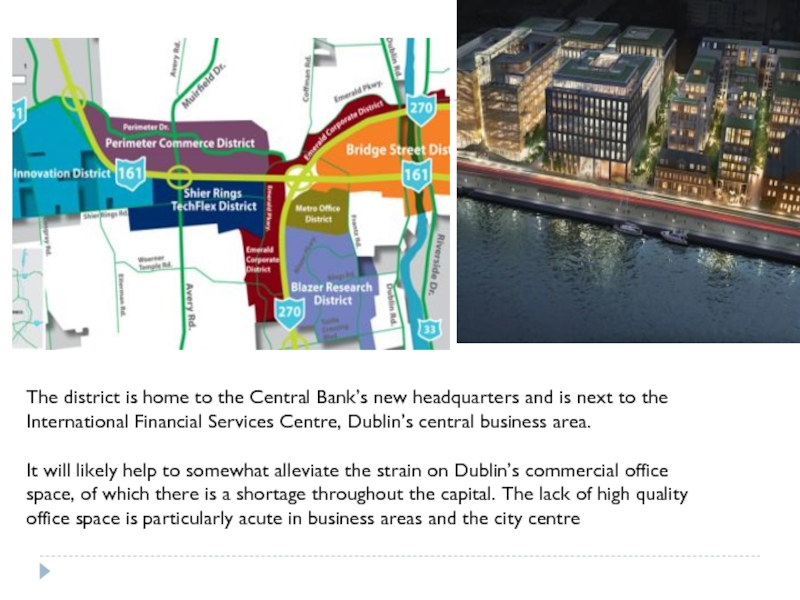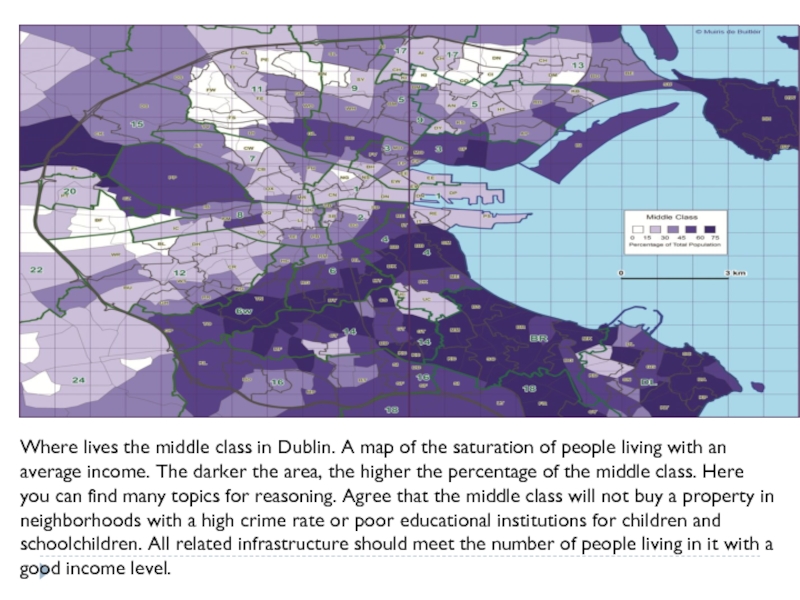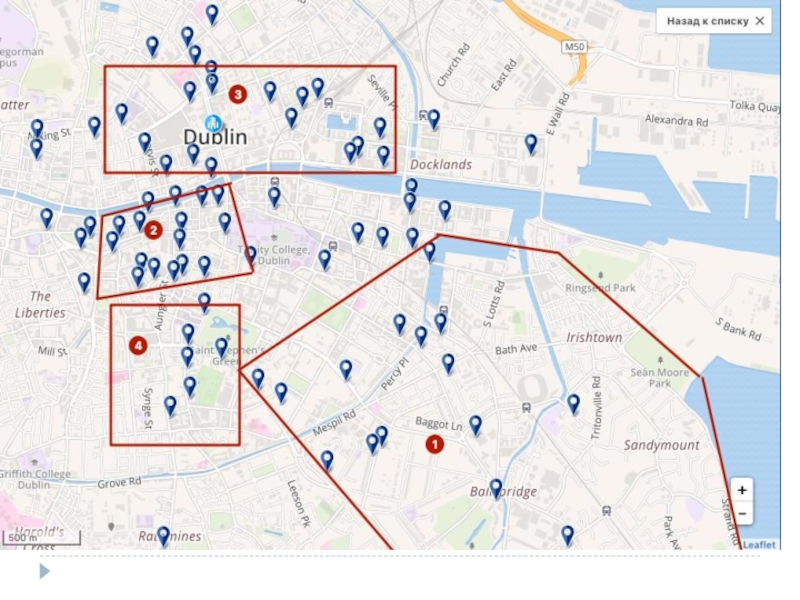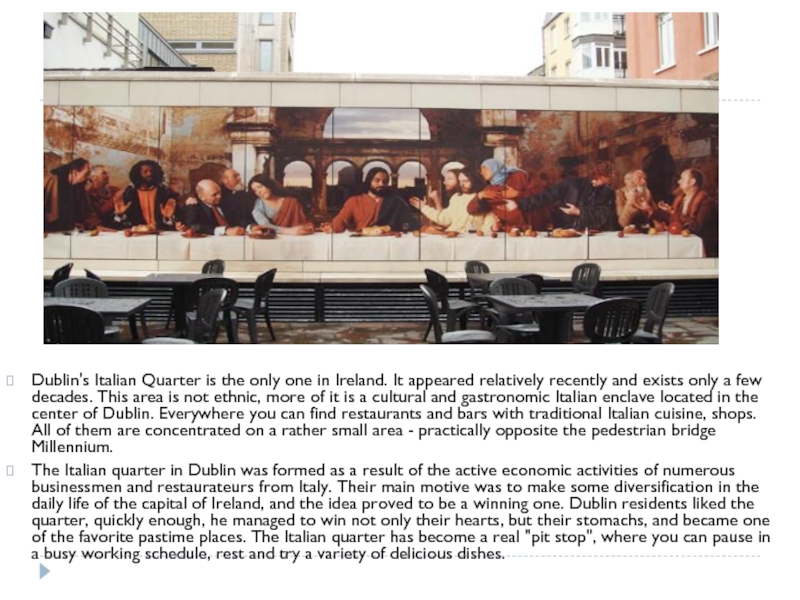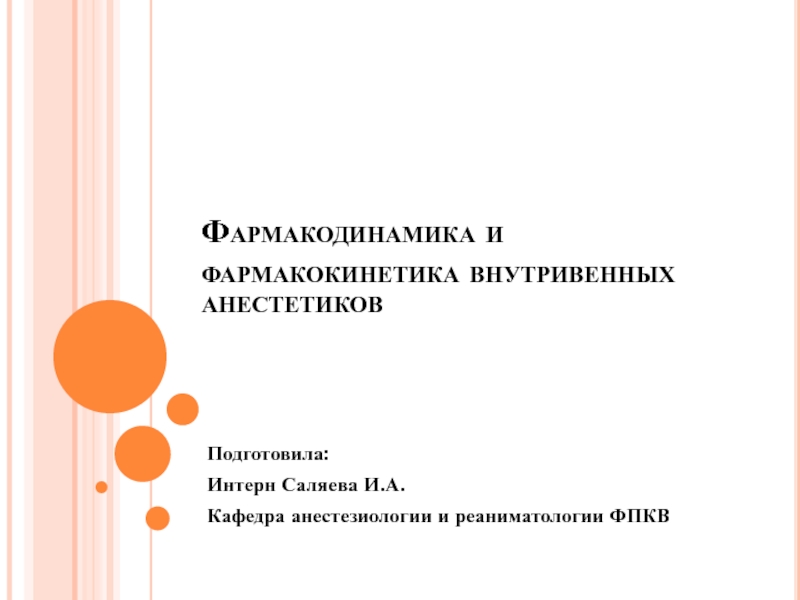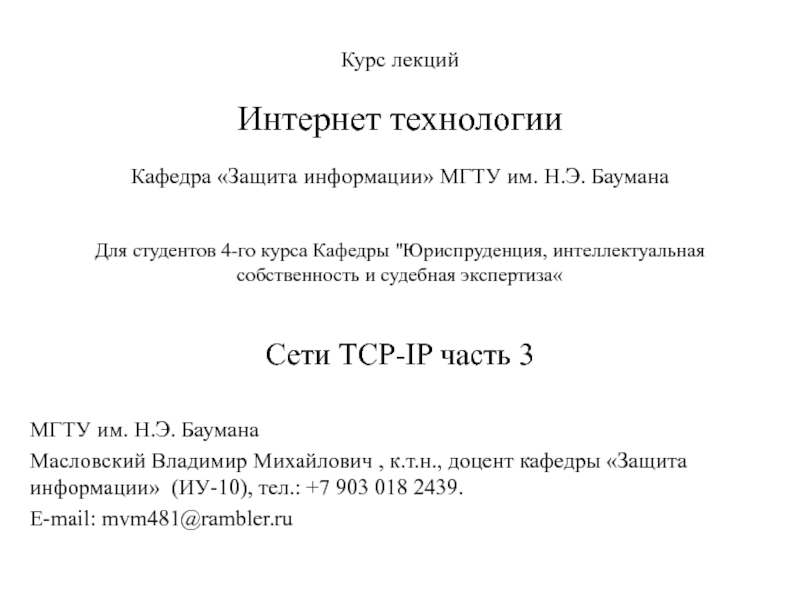Разделы презентаций
- Разное
- Английский язык
- Астрономия
- Алгебра
- Биология
- География
- Геометрия
- Детские презентации
- Информатика
- История
- Литература
- Математика
- Медицина
- Менеджмент
- Музыка
- МХК
- Немецкий язык
- ОБЖ
- Обществознание
- Окружающий мир
- Педагогика
- Русский язык
- Технология
- Физика
- Философия
- Химия
- Шаблоны, картинки для презентаций
- Экология
- Экономика
- Юриспруденция
Prepared by: G ulamgoziyev J. A
Содержание
- 1. Prepared by: G ulamgoziyev J. A
- 2. Dublin (Irish Baile Átha Cliath - Bale
- 3. https://avatars.mds.yandex.net/get-pdb/70729/4aa7b457-ff70-4ab1-b8df-697a7f2df663/s1200
- 4. The name Dublin originated at the confluence
- 5. Functional map Dublin
- 6. Having seen most local breweries and
- 7. Phoenix Park is a city park located
- 8. The district is home to the Central
- 9. Where lives the middle class in Dublin.
- 10. Слайд 10
- 11. Dublin's Italian Quarter is the only one
- 12. Dublin City Council Waste Management Services Officer
- 13. Thanks for attention!
- 14. Скачать презентанцию
Слайды и текст этой презентации
Слайд 4The name Dublin originated at the confluence of the Irish-English
derivative of the Ir. Dubh Linn (with ir.dubh → black,
and linn → creek, pond). Historically, in the traditional Gaelic script used in the Irish language, bh was written with a dot over b, that is, Du ḃ Linn or Duḃlinn. French-speaking Normans lowered the point and recorded the name in a different way, like Develyn.modern Dublin, although the city and fortress walls were laid by the Scandinavians much later, around 841. So Dublin became the mainstay of the small kingdom of the Vikings on the island.
Dublin became the mainstay of British power in Ireland in 1169, when British troops led by Henry II Plantagenet invaded the island. They relatively quickly conquered Wexford and took without much difficulty storming the fortress-city of Dublin. Henry II was recognized by the Pope as the Lord of Ireland and in 1171 proclaimed Dublin a royal city.
The Tudor dynasty made strenuous attempts to subjugate the entire island. While the old English
community of Dublin and the Pale area was happy with the conquest and disarmament of the
indigenous Irish, those in turn became alien to the Protestant transformations that took place in
England.
In the 1640s, thousands of Protestants poured into Dublin to avoid the Irish Rebellion of 1641. As a result, Protestants became the majority in Dublin. When the Irish Catholic forces later began to threaten the city, Catholics were evicted from the city. Dublin was besieged twice during the Irish Federal Wars, in 1646 and 1649. However, in both cases, the attackers were driven out before the long siege could begin. In 1649, the combined forces of the Irish allies and the English royalists were defeated by the English Parliamentary garrison of Dublin in the Battle of Ratmina.
the end of the seventeenth century, Dublin became the capital of Ireland, ruled by a new English Protestant minority. Dublin, along with some parts of Ulster, by the beginning of the XVIII century was the only part of Ireland, where the largest part of the population were Protestants.
Слайд 6 Having seen most local breweries and distilleries close since
the late 1800s, the area is currently undergoing a renaissance
as a centre for craft distilling and brewing in Dublin. Teelings Whiskey have opened their new distillery and visitor centre in Newmarket, the first new Irish whiskey distillery to develop in Dublin since the 19th century, while significant investment has also been made in The Liberties by the Dublin Whiskey Company, Alltech, Galway Bay Brewery, 5 Lamps Brewery and others. The Beer Market, the only bar in Ireland which serves only beer, opened on Cornmarket in April 2015.Слайд 7Phoenix Park is a city park located in Dublin, one
of the largest fenced parks in Europe. This is a
favorite vacation spot for townspeople and tourists. The name of the park does not come from the phoenix bird, but from the Irish phrase fionn uisce, which means "pure water", and sounds like the word "phoenix".Слайд 8The district is home to the Central Bank’s new headquarters
and is next to the International Financial Services Centre, Dublin’s
central business area.It will likely help to somewhat alleviate the strain on Dublin’s commercial office space, of which there is a shortage throughout the capital. The lack of high quality office space is particularly acute in business areas and the city centre
Слайд 9Where lives the middle class in Dublin. A map of
the saturation of people living with an average income. The
darker the area, the higher the percentage of the middle class. Here you can find many topics for reasoning. Agree that the middle class will not buy a property in neighborhoods with a high crime rate or poor educational institutions for children and schoolchildren. All related infrastructure should meet the number of people living in it with a good income level.Слайд 11Dublin's Italian Quarter is the only one in Ireland. It
appeared relatively recently and exists only a few decades. This
area is not ethnic, more of it is a cultural and gastronomic Italian enclave located in the center of Dublin. Everywhere you can find restaurants and bars with traditional Italian cuisine, shops. All of them are concentrated on a rather small area - practically opposite the pedestrian bridge Millennium.The Italian quarter in Dublin was formed as a result of the active economic activities of numerous businessmen and restaurateurs from Italy. Their main motive was to make some diversification in the daily life of the capital of Ireland, and the idea proved to be a winning one. Dublin residents liked the quarter, quickly enough, he managed to win not only their hearts, but their stomachs, and became one of the favorite pastime places. The Italian quarter has become a real "pit stop", where you can pause in a busy working schedule, rest and try a variety of delicious dishes.
Слайд 12
Dublin City Council Waste Management Services Officer Simon Brock said:
"Our cleaning teams out on Dublin's streets everyday are seeing
the implications of this problem and the serious effects it's having on our beautiful city, both visually and environmentally."He added: "We want smokers to make a conscious effort to bin their cigarette butt in the nearest bin or suitable container."
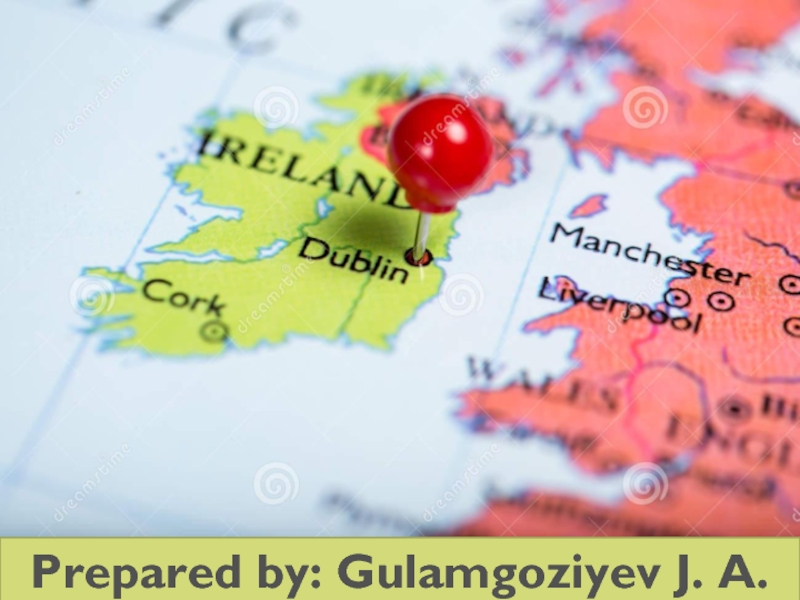
![Prepared by: G ulamgoziyev J. A Dublin (Irish Baile Átha Cliath - Bale Aha-Kliach [bˠalʲə aːha klʲiəh] Dublin (Irish Baile Átha Cliath - Bale Aha-Kliach [bˠalʲə aːha klʲiəh] or Duibhlinn (Duvlin)) is a county](/img/thumbs/40f03f6877c7e1433cfee2ad35b89e6b-800x.jpg)
